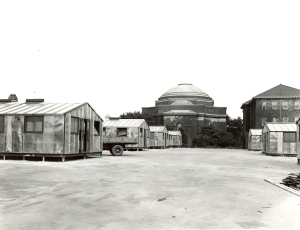Air Force ROTC unofficially began with the passage of the Morrill Act (Land-Grant Act) in 1862, which established military training at land-grant colleges and universities. The name “Reserve Officer Training Corps,” or ROTC, was actually created by the passage of the National Defense Act in 1916.
In the 1920s, AFROTC began focusing on successful engineering schools to establish its programs. By the 1950s, there were 188 AFROTC units with 145,000 cadets. Women began joining Air Force ROTC nationally in 1970. And in 1987, the scholarship program for high school seniors began.
Syracuse University began offering flight training in 1940 and housed the largest Army Air Forces College Training Program in the country during World War II. In 1946, the War Department approved Syracuse University to be one of the original 77 universities to house an Air ROTC unit. With the establishment of the United States Air Force as a separate service in 1947, it became known as Air Force ROTC.
Learn more about Syracuse University’s overall commitment to veterans.
















